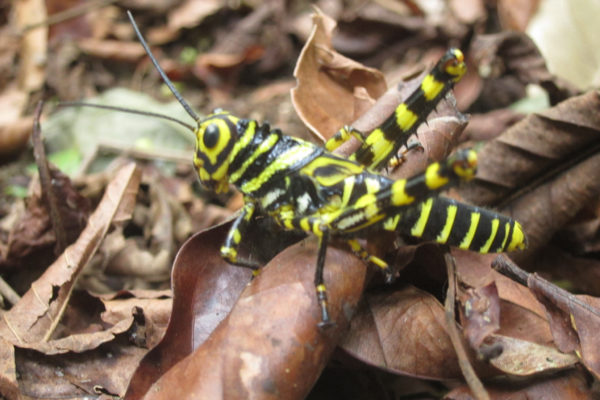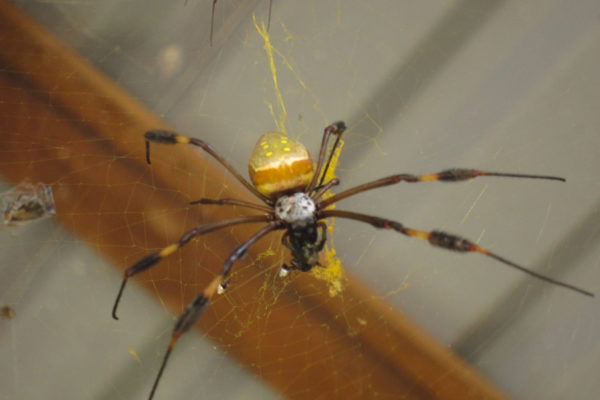Corcovado National Park – Day & Night
The Jungle in the Day
With monkeys swinging from every tree around us and birders standing quietly in their beige jungle explorer outfits with binoculars around their necks, it’s easy to understand why Corcovado National Park is the place to be for an unforgettable jungle and ecotourism adventure in Costa Rica. There was about five of us in a gro up that we organized through the local information centre in Drake Bay. Not even 10 minutes into our trip we spotted a wild tapir, resting in a shaded area from his wild nocturnal adventures the night before. He laid there subtlely breathing and regaining his energy for the night to come. It’s not hard to find a tapir in Corcovado National Park, but remember this isn’t a true reflection of the general population in Central America.
up that we organized through the local information centre in Drake Bay. Not even 10 minutes into our trip we spotted a wild tapir, resting in a shaded area from his wild nocturnal adventures the night before. He laid there subtlely breathing and regaining his energy for the night to come. It’s not hard to find a tapir in Corcovado National Park, but remember this isn’t a true reflection of the general population in Central America.
We carried on exploring, eventually spotting all four species of monkey and numerous other birds – and birders. We trekked on and listened to the sounds of the jungle while our guide pointed out the  flora, fauna, wild boar, and ant species. We eventually arrived at a ranger station which housed an interpretive display of wildlife in the area and educated travellers about the integrity and diversity of Corcovado National Park. There was also a spider who called the ranger station home and was not for the faint of heart.
flora, fauna, wild boar, and ant species. We eventually arrived at a ranger station which housed an interpretive display of wildlife in the area and educated travellers about the integrity and diversity of Corcovado National Park. There was also a spider who called the ranger station home and was not for the faint of heart.
Wild tapir sleeping in the forest
Corcovado National Park
Toucan
Corcovado National Park
Wild boar
Corcovado National Park
Corcovado National Park is made up of 13 major ecosystems including lowland rainforest, highland cloud forest, jolillo palm forest, and mangrove swamps, as well as coastal marine and beach habitats. This is one of the only remaining intact old growth rainforests in Pacific Central America.
The Jungle in the Night
No trip to Drake Bay or Puerto Jiménez is complete without an evening exploring what comes out once the sun sets. A jungle night tour in and around Corcovado National Park is the perfect way to listen to the different sounds of the wild after dark and see the colourful frogs, creepy snakes, sleeping Jesus lizards, and whatever else might be lurking in the forest darkness. Our guide picked us up from our accommodation and we set out on a tour into the dark forest with flashlights. We hiked through and beside a creek for the best chance of spotting wildlife that might be drinking or hanging out near the flowing water. Perhaps the most interesting part of the tour was the numerous amounts of frogs – some that could severely hurt you. Colourful tree frogs lingered on the wide tropical leaves including the poisonous dart frog (not something you want to mess with!) Poisonous dart frogs get their name from the indigenous people who used their poison on the end of their blow darts when hunting. On tour, you may also witness amphibians reproducing or protecting a sack of larvae surrounding eggs that will hatch into tadpoles.
Discovering otherworldly flora and fauna is done in no better place in Central America than in Corcovado National Park. Whether it’s day or night, the jungle is alive and inviting explorers to engage and connect with this biodiverse region.
Poisonous dart frog
Corcovado National Park
Sleeping Jesus lizard
Corcovado National Park
Frogs getting jiggy
Corcovado National Park
Also in the area…
A trip to the Corcovado area would not be complete without snorkelling or diving at Isla de Caño, and hiking around the island. Read more in our Isla de Caño post.
Getting to the Osa Peninsula Region
Nature Air flies daily to Puerto Jiménez and Drake Bay, which is where our basecamp was. Drake Bay is a beautiful sleepy village that has many different accommodation options. We opted for cheap and cheerful while there, with a million-dollar sunset view.
Ecolodges in Corcovado National Park area
La Leona Eco-Lodge – Puerto Jiménez
Danta Lodge – Puerto Jiménez
Ojo del Mar Eco-Lodge – Puerto Jiménez
Anguila de Osa – Drake Bay
Author: Eco Escape Travel | Date: February 21, 2023

